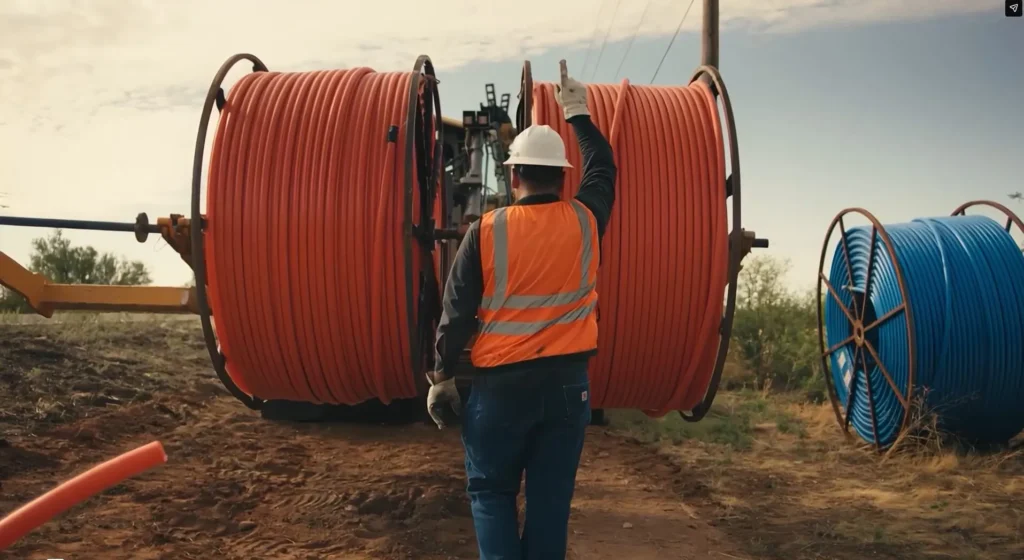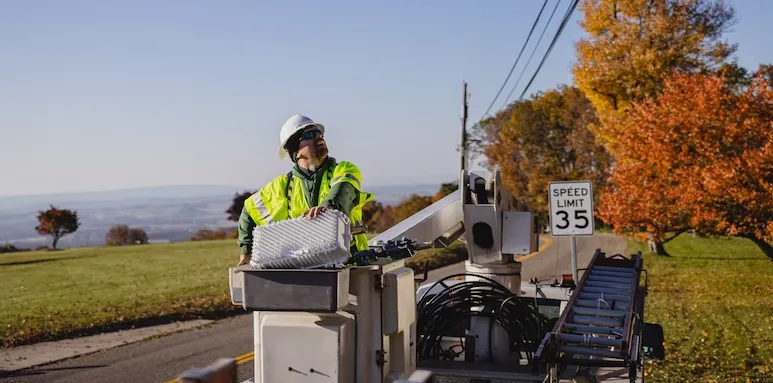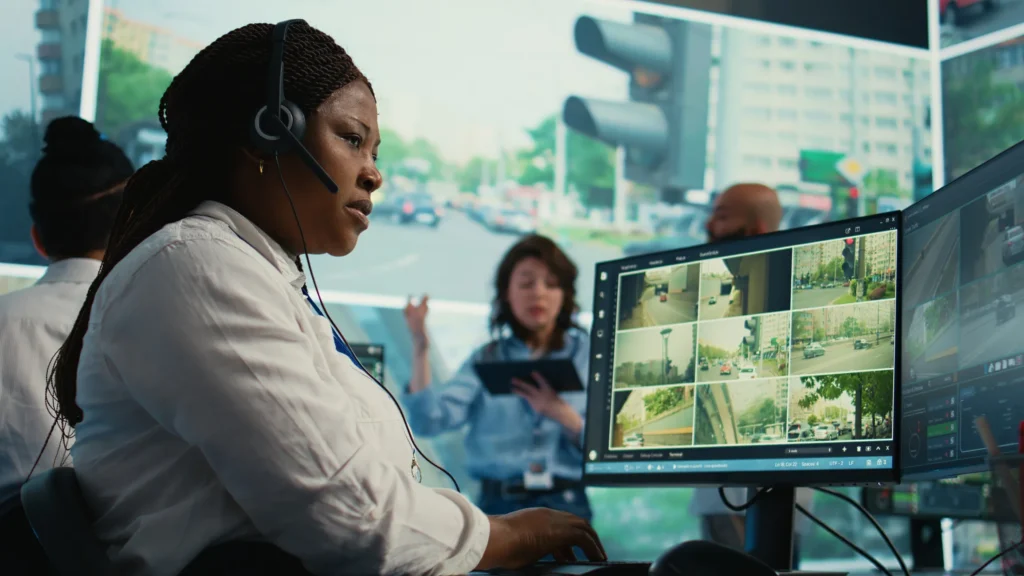This summer, NCTA premiered “Every Last Mile,” a docufilm that chronicles the physical and operational challenges that three construction crews faced as they tackled the daunting work of extending broadband some of America’s most rural areas. The construction work documented is harrowing, but behind the scenes, film crews also had to figure out how to get their job done under challenging conditions.
NCTA talked with Lee Morton, the director of “Every Last Mile,” to learn what he and his crew had to contend with in order to tell this critical story of connections and why they matter.
A front-row seat to the tough work
Witnessing the work firsthand, Morton reflected on the size and scale of the documentary task. “The United States is so big, and there’s this dilemma: you have this huge country, but you also want to connect [every part of it].”
- Morton and his team followed broadband crews and quickly learned the various construction complexities they regularly face, “That takes trenching, that takes working through water, it takes working in the air on [utility] lines. It is just so difficult in different ways.”
- “You have temperature, climate, winds, inclement weather, unpredictable terrain, and unknown utilities. All these challenges are just not talked about as part of the goal of connecting everyone.”
What he saw stuck with him, “You go to bed, and you work 12 hours, and you do it again.”
- “I’m glad that we shined a light on these folks that do it, because the reward, the benefit is that connectivity, it’s keeping up with everyone else around.”
For Morton, the importance of the hard work was always evident.
- “The stakes are high. From an education standpoint, from an employment standpoint, from health, from e-commerce, there’s endless benefits to all this. And we want to feel there’s an equality standpoint, equity of rural to city no matter what.”
Difficult conditions for both crews
While extending broadband infrastructure in remote areas is tough work, documenting it with a film crew is also challenging. Morton and his team had to problem-solve potential issues long in advance, given the limited resources and uncertain conditions in the field.
- “Sometimes in remote Alaska, it’s not that bad terrain-wise, but it could put you back five days if you don’t have a part come in. And that takes time to get parts. So, the remoteness plays interestingly, from getting material and supplies, and then also from an isolation standpoint, getting there on a job assignment, they’re there for four months.”
- “As a production crew, you’re double and tripling down on your B plan and C plan, on equipment and production approaches and all the different types of accessories that you would need like batteries, just in case something happens.”
- Morton noted, “You really have to have two of everything. Because the places that we’re in, we can’t go to a rental place. There aren’t many people that shoot productions there, so you can’t even call for favors. You are really out as remote as it gets.”
Skilled crew members shine
But as complex as the work might have been, Morton described experience in action from the broadband crews.
- “They don’t stop, so we had to move quickly too!”
- “We’re running through bushes and on the side of the road, which is an extremely dangerous position. We had cones, but they’re just cones…[they] separate you 3-4 feet from cars that are going 50 to 80 miles an hour. And sometimes they’re not happy…so they’re a little bit more aggressive about their driving. Safety was certainly important.”
- “The terrain that we were getting into in some of the places, we were shooting across rivers, we were shooting on the side of these pretty steep hills, which at one point the ditch trencher almost tipped over.”
- “We’re trying to be prepared. We’re trying to be in the right position. We’re trying to be safe and also creative and collaborate.”
For all the dangers and obstacles the crews encountered, one moment in particular stuck out to the film’s director.
- “There’s a moment where the gentleman in Alaska is surveying for other utilities, and he reminds us that if he hits a high-voltage line, he could kill everyone around us. You don’t think about that when we’re talking about communication cables. That really shocked us, no pun intended, the reality of how dangerous this could be.”
The power of connections
Off the job site, the impact of the work was undeniable. As Morton and his film crew traveled across the country, they had time to sit and talk with local residents who would be impacted by improved connectivity.
- Eating fresh salmon with a family in King Cove, Alaska, Morton met a young indigenous artist eager to share her work with others.
- “She said, ‘I just do art, but I want to be able to get it to the world more. I want to get us to the world more.’”
To see the incredible story that Lee Morton and his crew worked so hard to tell, watch “Every Last Mile.” And to learn about other demanding projects happening around the country, check out NCTA’s interactive rural broadband narrative.









